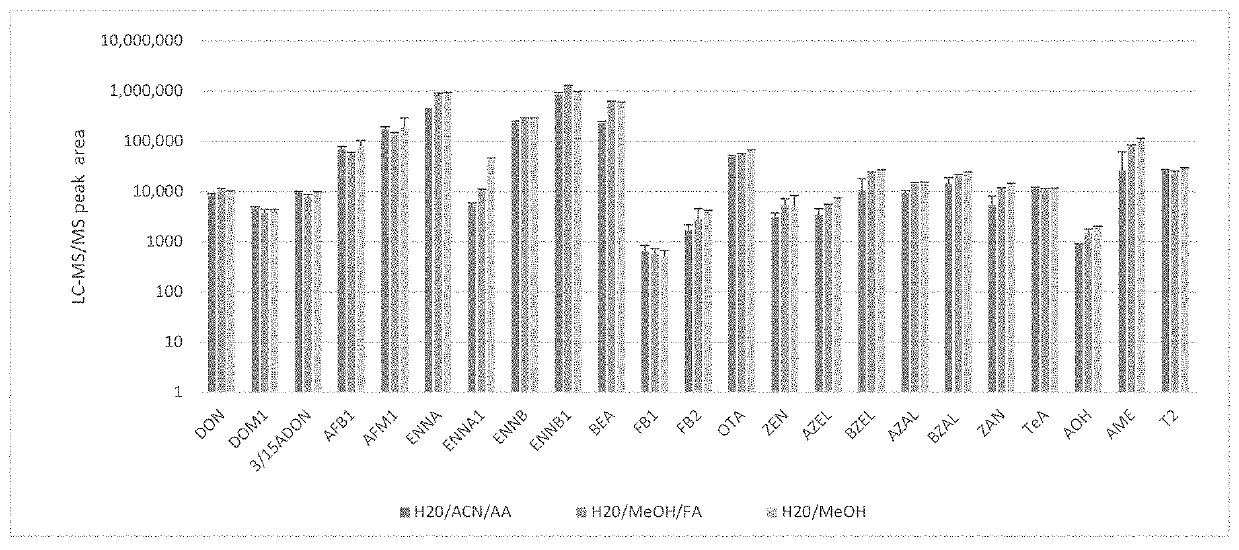Monitoring mycotoxins in the blood of pigs or broiler chickens
a technology of mycotoxins and blood, which is applied in the field of monitoring mycotoxins in the blood of pigs or broiler chickens, can solve the problems of negative impact on productivity, lack of natural resistance and immunity, and inherent risk of mycotoxins
- Summary
- Abstract
- Description
- Claims
- Application Information
AI Technical Summary
Benefits of technology
Problems solved by technology
Method used
Image
Examples
Embodiment Construction
[0104]In order for the method of the present invention to be suitable for practical use, the various steps comprised in such method need to be validated. To that end, various steps comprised within such method have been tested by the present inventors and its results have been published in the following two articles. As such these articles describe various aspects of the invention, subject of the present application:[0105]1) the Article entitled “Multi LC-MS / MS and LC-HRMS Methods for Determination of 24 Mycotoxins including Major Phase I and II Biomarker Metabolites in Biological Matrices from Pigs and Broiler Chickens”, by Marianne Lauwers, Siegrid De Baere, Ben Letor, Michael Rychlik, Siska Croubels and Mathias Devreese, published on Mar. 19, 2019, by Toxins 2019, 11, 171; doi: 10.3390 / toxins 11030171, www.mdpi.com / journal / toxins, hereinafter referred to as Article (1);[0106]2) The Article entitled “Assessment of dried blood spots for multi-mycotoxin biomarker analysis in pigs an...
PUM
 Login to View More
Login to View More Abstract
Description
Claims
Application Information
 Login to View More
Login to View More - R&D
- Intellectual Property
- Life Sciences
- Materials
- Tech Scout
- Unparalleled Data Quality
- Higher Quality Content
- 60% Fewer Hallucinations
Browse by: Latest US Patents, China's latest patents, Technical Efficacy Thesaurus, Application Domain, Technology Topic, Popular Technical Reports.
© 2025 PatSnap. All rights reserved.Legal|Privacy policy|Modern Slavery Act Transparency Statement|Sitemap|About US| Contact US: help@patsnap.com

